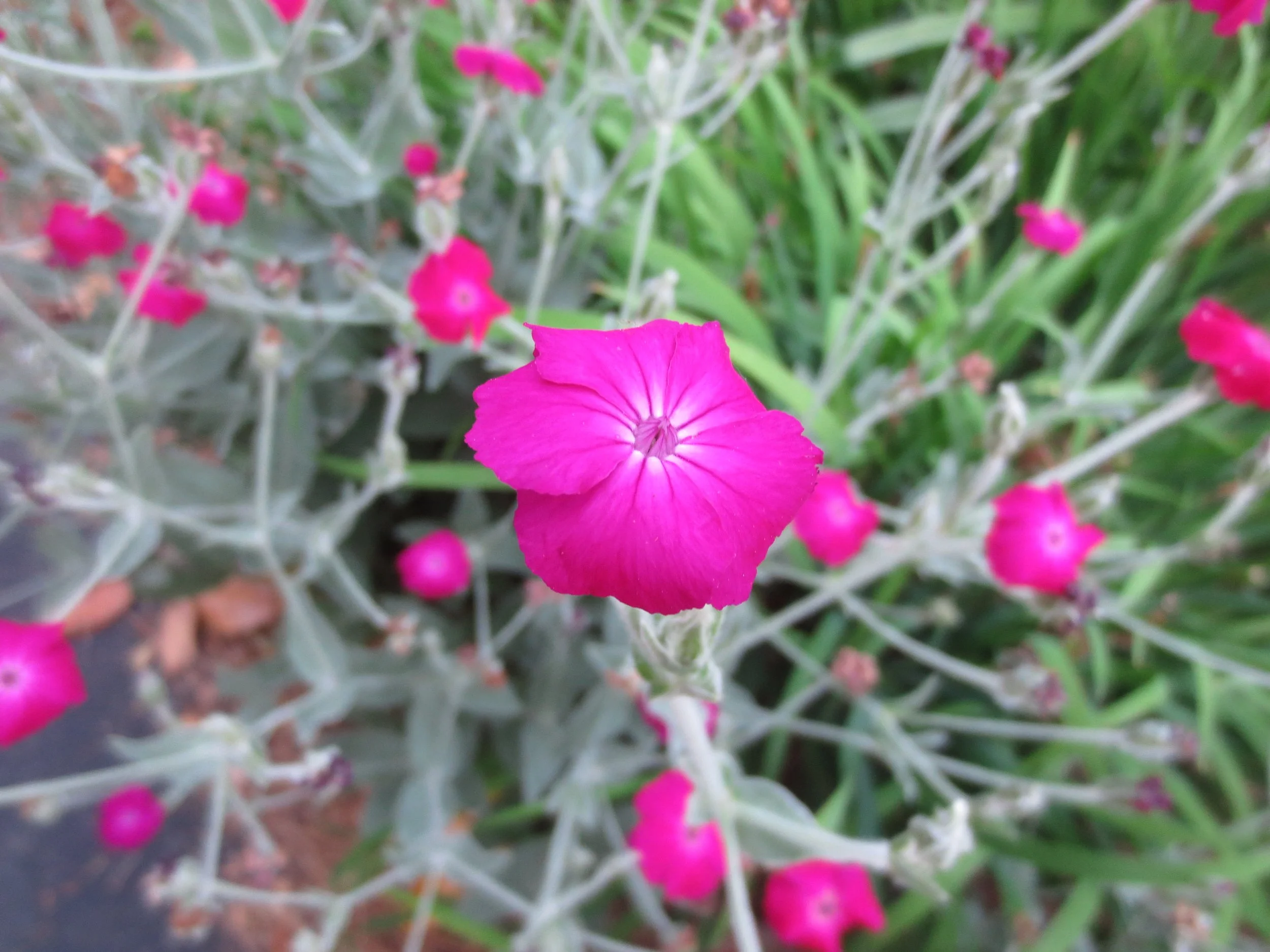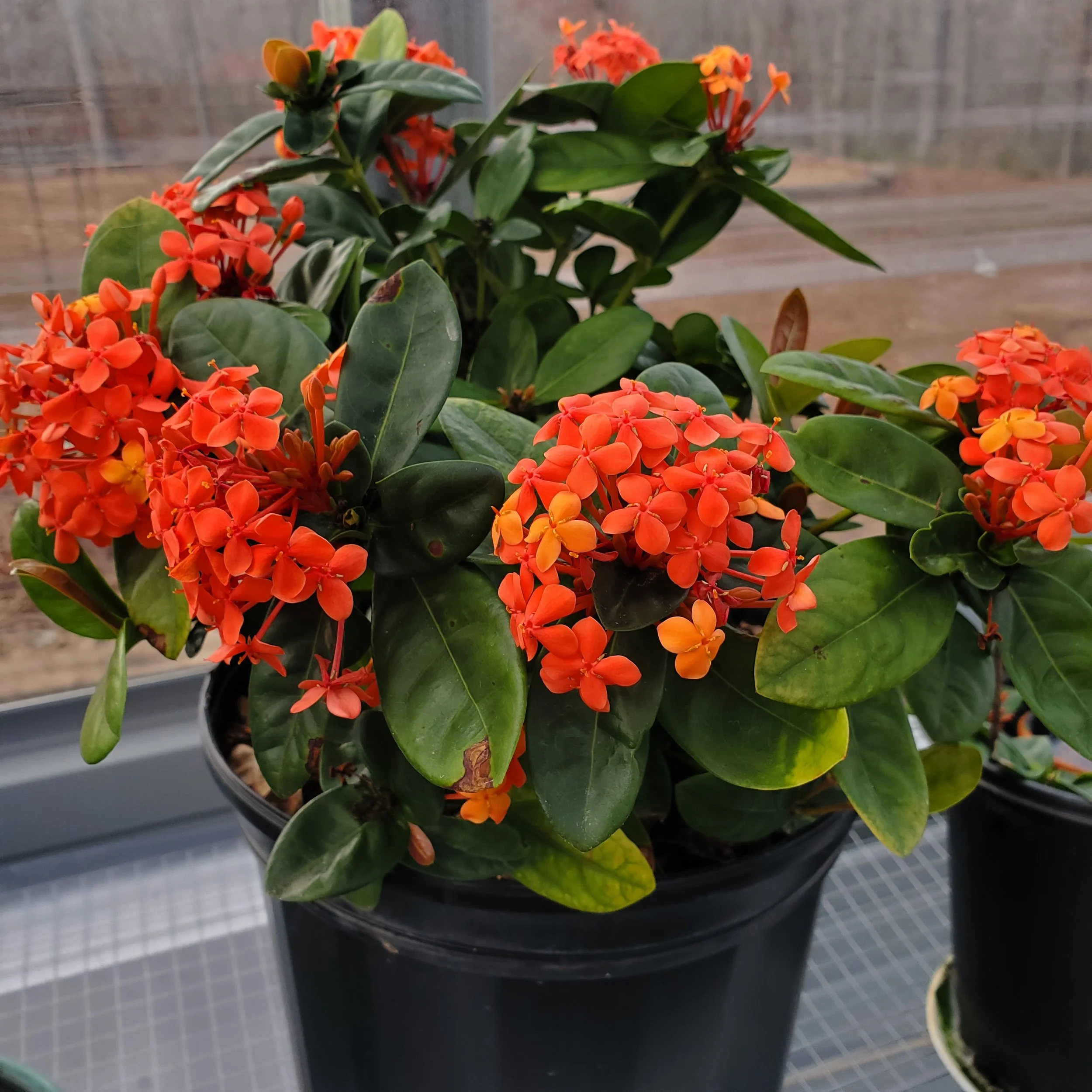A few months ago, I was hosting a garden club meeting and wanted a container plant to add seasonal color near the entrance door. I visited the garden center of a home improvement store, intending to purchase a Croton (beautiful waxy leaves but not cold hardy in my area) or Chrysanthemum (predictable, boring). Instead, I spotted a plant covered with clusters of gorgeous orange flowers. Though I did not know the name, I instantly recognized it as the same beauty that I had encountered and admired many years ago. Back then, it was in a large patio container of a home on garden tour. The hostess told me the name, which I promptly forgot, and said that it was tender but she loved it so much that her husband used a hand truck to haul it into their heated basement each winter. The one at the home improvement store was labeled, Ixora.
I was feeling pleased with myself when Ixora rode home in my backseat. A little research revealed that this was Ixora coccinea, pronounced ik-ZOR-ah kock-SIN-ee-uh. Common names are Jungle Flame, Flame of the Woods, and Jungle Geranium. The genus name seems to fit the exotic appearance of the plant, so mine is labeled Ixora.
Ixora is native to Asia. It is evergreen and common in Florida. Unfortunately, it is only cold hardy as far north as zone 10, and will suffer under 50 degrees. While mine is orange, Ixora coccinea is also available in yellow, pink, and red. Ixora takes full sun, regular irrigation, acidic soil, and monthly applications of fertilizer. The mature height can be over 5 feet, but it is usually kept smaller by an annual pruning in early spring. Avoid more frequent cutbacks to avoid removing flower buds Plants flower almost continuously, late spring to fall.
I became less diligent about watering my potted specimen as cool weather approached. New buds stopped appearing, and the shiny leaves started to look dull and crispy. I moved it into the greenhouse with the intent of taking a cutting or two. Six weeks of light, warmth, and regular water in the greenhouse, and my Ixora is blooming as beautifully as it was the day it came home with me. I pruned all branches with the intent of keeping the plant small and dense. I treated the trimmings with rooting hormone and stuck them into damp vermiculite. They rooted quickly, and I have already moved nine plants to individual containers for growing on. In spring, I will select one to preserve as a “mother” plant, and place the rest of them in the ground in my courtyard garden, treating them as annuals. Of course, this assumes that the cuttings will survive in the greenhouse from now until mid-April. Grown indoors, Ixora is prone to mealybugs, thrips, and scale, and probably whitefly as well. I’ll tend them diligently, because OH, what a payback!
Whether you choose to keep yours as a houseplant or overwinter it in a greenhouse, reduce watering and fertilizing during the dormant period.
This Ixora was looking pathetic as fall approached. A few weeks of sun, heat, and water in the greenhouse and it has burst into flower again.

